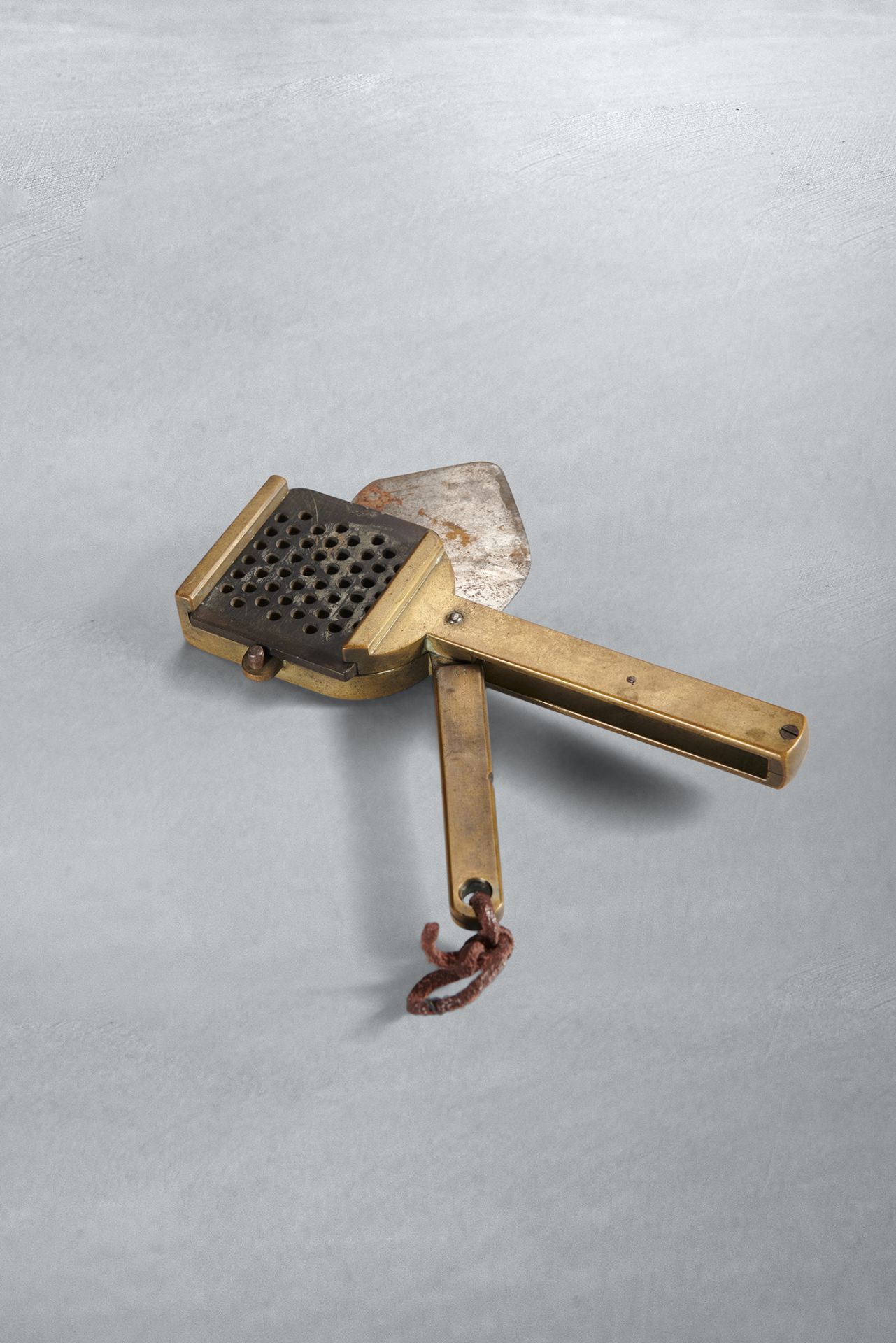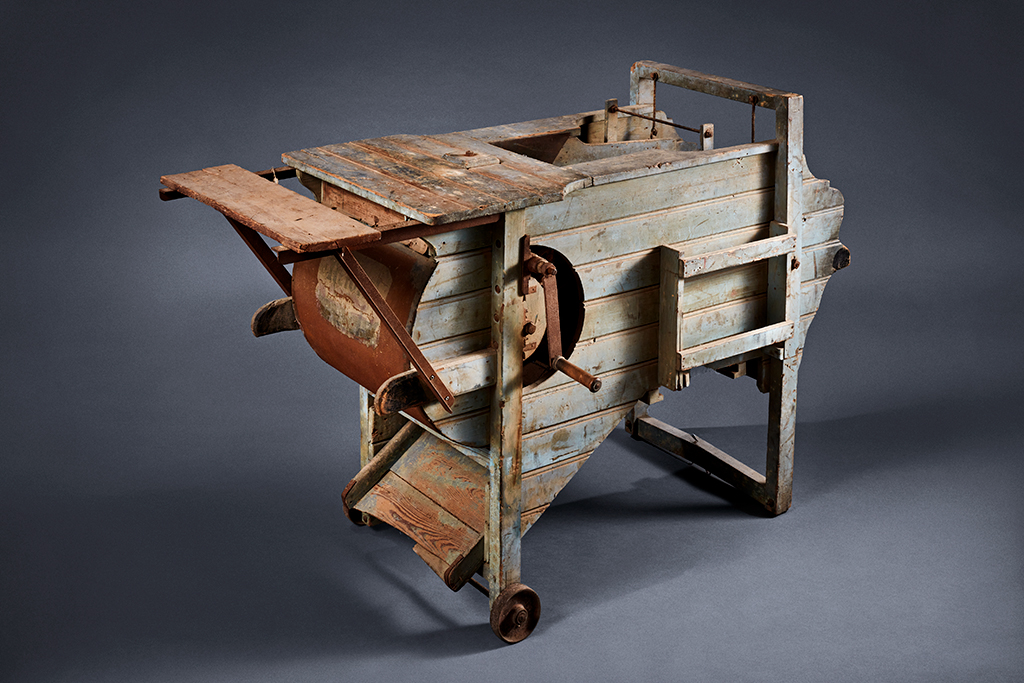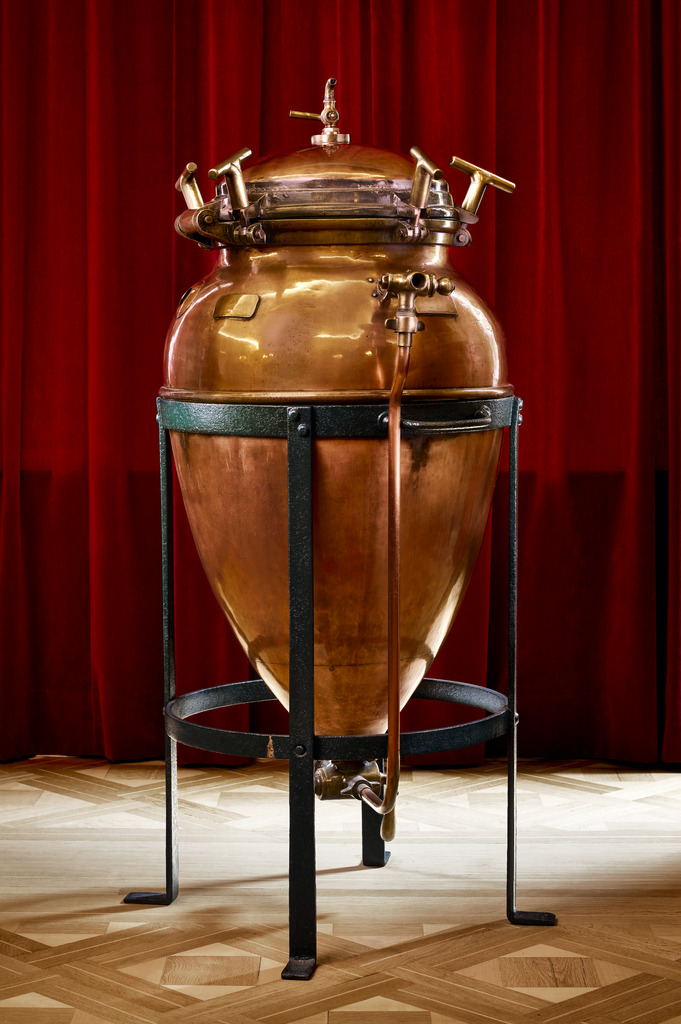INFO
Johann Greiner / C. Pohls Kornprüfer
1920-1950
copper, Bakelite, leather, metal
2.5 x 6.5 x 18 cm

Check this out!
This strange looking object doesn't reveal its function easily: it most closely resembles a kitchen utensil, a cross between two baking spatulas and a potato masher. To understand what the Kornprüfer, or grain tester, was used for, we had to look up the instructions, which we found in the German Meyers Großes Konversations-Lexikon, a kind of encyclopaedia from 1907.
In the picture, a hand holds the utensil like a begging tin, while grain is shaken from a paper bag onto the 'sieve'. The grains get stuck in the holes, so that the ends sticking out underneath can be cut off by the blade.
Waxy or mealy
According to the instructions, you have to close the top flap to hold the grains in place, and then pull the knife handle towards the big handle. So, what's the point of all this? The accompanying caption explains: 'An instrument for cutting cereal grains in order to judge the quality of the grain by its texture, especially the waxiness or mealiness of the cut surface.'
Company film
How quality was assessed in practice is demonstrated in the film Beiersch-Bierbrouwerij "De Amstel" Amsterdam from 1927-28, the oldest film in the Heineken Collection. In it we see the head of the laboratory comparing grain sizes from a batch of barley that had been delivered by boat with grain from his own sample. He no doubt had his Kornprüfer with him to inspect the inside of the grains.
Quality is paramount
In those days barley was imported from Central Europe because Dutch barley was too moist and germinated too slowly. Improvements in cultivation mean this is no longer a problem: with an annual production of around 250,000 tonnes, barley is the second most widely grown cereal crop in the Netherlands after wheat. The highest quality grain is destined for beer industry maltings in the Netherlands and abroad.
Horse and pear of yesteryear
The grain tester is one of many old utensils in the Heineken Collection that recall the brewing processes of yesteryear. Another is the so-called 'grain horse' or winnower (Dutch: graanpaard) , a kind of mechanised sieve used to separate the chaff from the grain. Another interesting instrument is the copper 'yeast pear' (Dutch: gistpeer) , a pear-shaped container used to preserve the brewing yeast until it is added to the wort.

